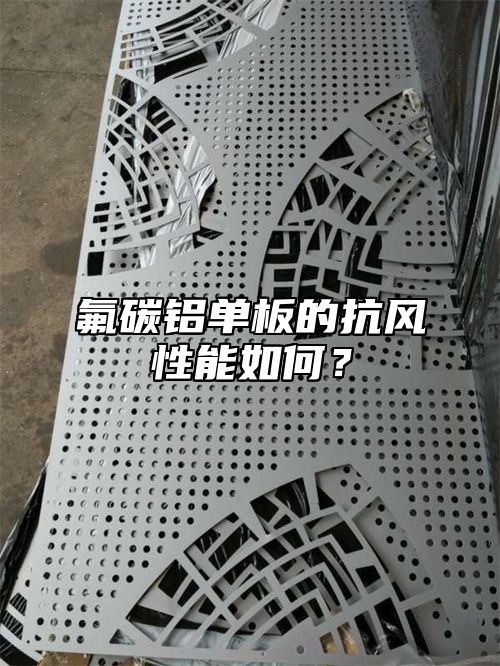

 Industry information
Industry information
Fluorocarbon aluminum veneer is a widely used building material in various fields such as construction, billboards, curtain walls, etc. It has excellent weather resistance, corrosion resistance, and decorative properties. In addition to these characteristics, fluorocarbon aluminum veneer also has certain wind resistance performance. The following will provide a detailed introduction to the wind resistance performance and influencing factors of fluorocarbon aluminum veneer.
1. Definition of wind resistance performance
Wind resistance refers to the ability of a material to resist wind forces. In the field of architecture, wind resistance performance is commonly used to evaluate the structural stability and safety of buildings.
1. Wind resistance performance of fluorocarbon aluminum veneer
The wind resistance performance of fluorocarbon aluminum veneer is related to factors such as its material and production process. High quality fluorocarbon aluminum veneer is usually made of high-strength aluminum alloy material, which is precision processed and treated to form a hard oxide film on its surface, thereby improving its hardness and wear resistance. The coating of fluorocarbon aluminum veneer is usually treated with high-temperature baking technology, which forms a strong bond between the coating and the substrate, thereby improving its wind resistance performance.
It should be noted that the wind resistance performance of fluorocarbon aluminum veneer is not absolute, and its performance is influenced by various factors such as material quality, usage environment, thickness, etc. When using fluorocarbon aluminum veneer, it is necessary to choose and design according to the specific situation, and follow the manufacturer's instructions and maintenance suggestions to ensure the service life and stable performance of fluorocarbon aluminum veneer.
Fluorocarbon aluminum veneer has certain wind resistance performance, which can improve its structural stability and safety to a certain extent. However, the specific wind resistance performance still needs to be evaluated and determined based on factors such as material characteristics and production processes. Consumers should choose fluorocarbon aluminum veneer products that meet the standards and follow the manufacturer's instructions and maintenance recommendations to ensure the service life and stable performance of fluorocarbon aluminum veneer. Attention should also be paid to the characteristics of materials and structural limitations during design and installation to ensure that the construction effect meets the requirements.